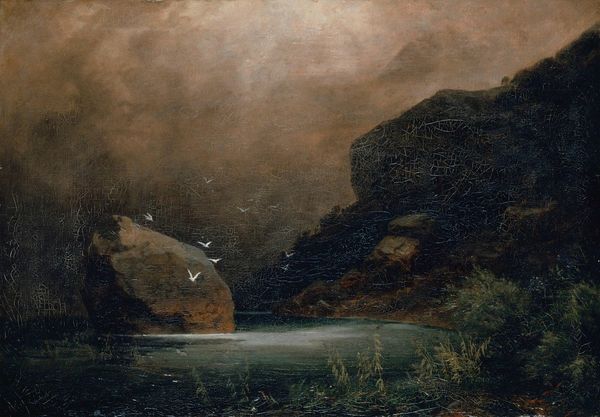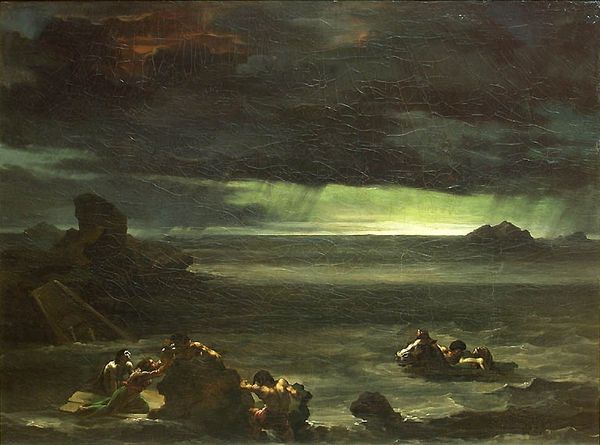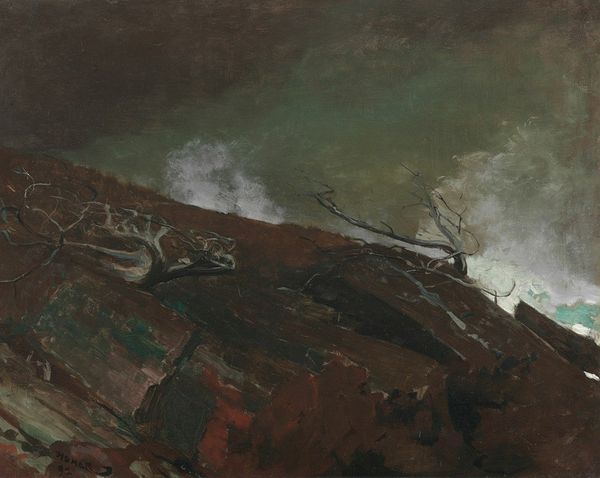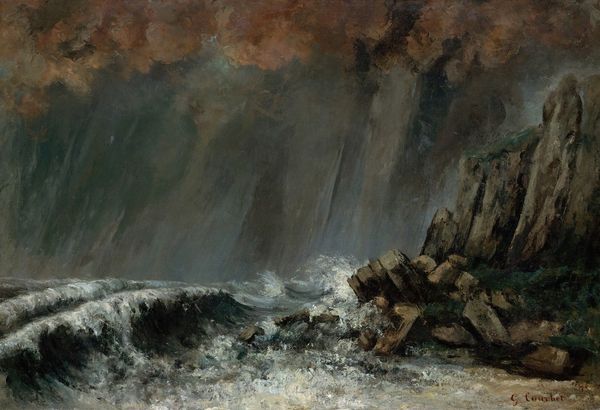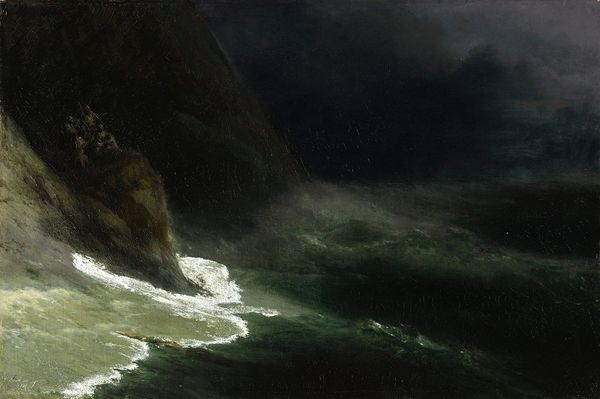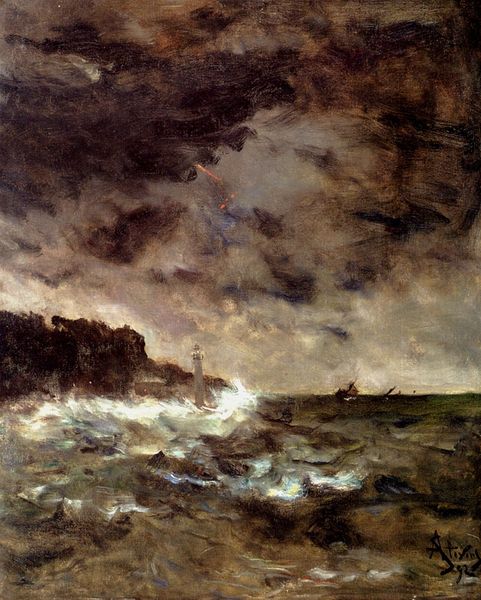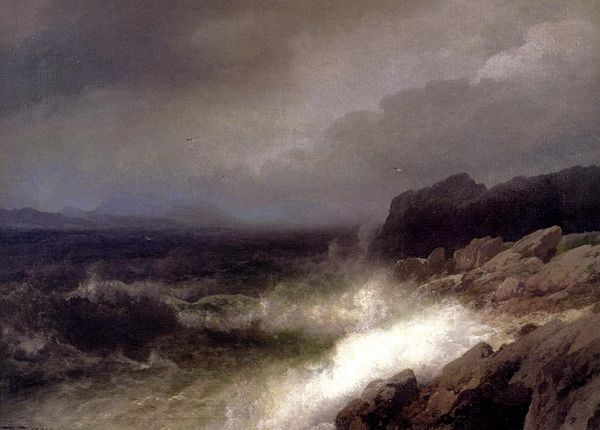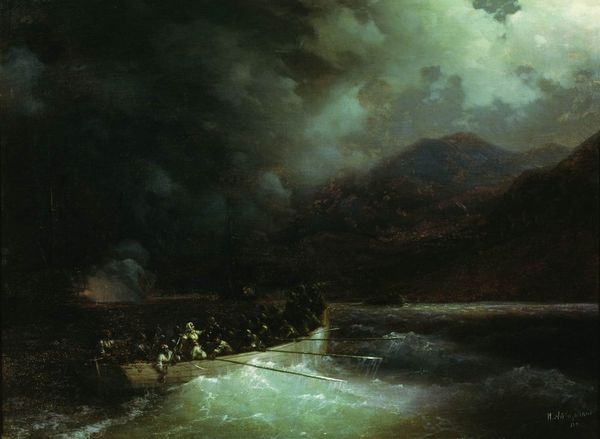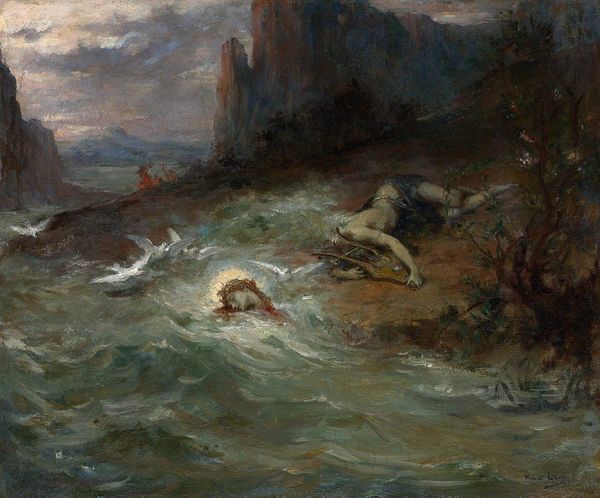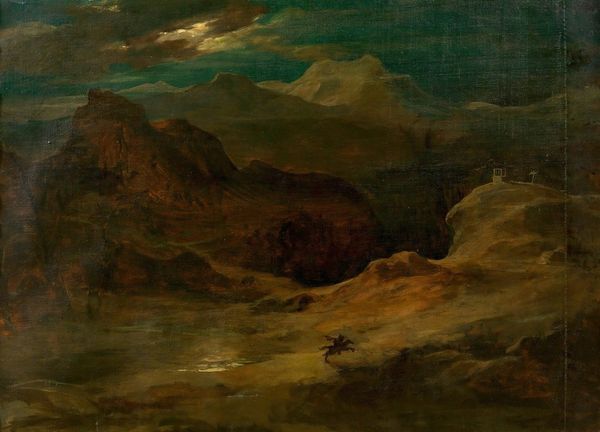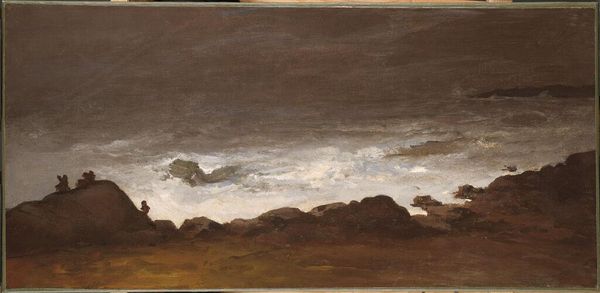
painting, oil-paint
#
narrative-art
#
painting
#
oil-paint
#
landscape
#
charcoal drawing
#
figuration
#
oil painting
#
romanticism
#
history-painting
#
realism
Copyright: Public Domain: Artvee
Curator: Immediately I’m swallowed by the turbulence of it all. The dark churning sea against the jagged rocks. The man… vulnerable yet defiant? It resonates with raw emotion, don’t you think? Editor: We're looking at Théodore Géricault’s oil painting, "Shipwrecked on a Beach", dating from around 1822 to 1823. Géricault was of course a prominent figure in the Romantic movement, and this work captures a particular sensibility that marked post-revolutionary France, in my opinion. Curator: Romantic is the perfect word. He's a castaway facing impossible odds, yet he seems utterly alive, aware. Almost a Byronic hero, wouldn’t you say? Like he almost wants to meet his maker in the elements! Editor: Well, this piece can be viewed in context of Géricault’s earlier work. Remember his infamous "Raft of the Medusa"? A painting dealing with a real, disastrous shipwreck and its sociopolitical reverberations across France? Curator: Right! And here, years later, you sense the same turmoil, the same exploration of human frailty against merciless nature, yet stripped of overt social commentary. The universality rings more true because it is a story everyone tells himself at one point, don’t you think? Editor: That makes a lot of sense, it's almost as if the socio-political context is internalized here. It feels much more subdued but perhaps more focused. A study in isolation. His position almost reminds me of antiquity heroes fighting nature… the figure alone in darkness, perhaps a reflection of our own society’s struggles. Curator: It's quite brilliant, to strip it all down to this elemental struggle. He captures that feeling of utter aloneness so perfectly. To look at it is to feel… exposed. The artist is able to share a raw story about pain using nature as the main setting and main source of emotion. It hits me directly. Editor: I think we both see how, even in what seems a small, almost minor work by Géricault, his intense vision and acute sensitivity to the drama of human existence continues to make these artworks resonate deeply with contemporary society. Curator: Precisely, and it will last centuries for that same reason: no one escapes aloneness. It is there in the rocks, in the waves and in the man's heart.
Comments
No comments
Be the first to comment and join the conversation on the ultimate creative platform.
